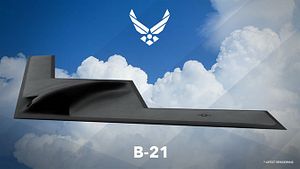The U.S. Air Force (USAF) has kicked off construction of the first B-21 “Raider” long-range strategic bomber, according to a July 9 report by Warrior Maven citing senior USAF officer.
“We’re closely monitoring the build of the additional test aircraft and associated software to support the first flight, Air Force Chief of Staff General David Goldfein, who spoke at an event at the Mitchell Institute for Aerospace Studies in June, was quoted as saying by the website.
The B-21 program has reportedly entered into its Engineering Manufacturing and Design phase earlier this year, which entails developing and designing the bomber, including completing full system integration, before going into production. According to a separate report of the general’s remarks published by U.S. Strategic Command, Goldfein said that the B-21 program is on schedule and the bomber is slated to enter service in the mid-2020s. The first B-21 is expected to take flight in 2021. Most details of the program remain top-secret including the actual size of the aircraft.
What appears certain is that the B-21 will be a subsonic long-range bomber featuring a flying wing design and purportedly carry both conventional and nuclear weapons, and be optionally manned.
The aircraft is being developed and built by U.S. defense contractor Northrop Grumman. The company was awarded a contract in October 2015 that covered the Engineering and Manufacturing Development (EMD) phase as well as the first five production lots to cover the production of the first 21 bombers. The construction of the prototype is reportedly taking place at the Air Force Plant 42 outside Palmdale, California. Notably, the bomber is supposed to be mainly built from existing technologies.
The aircraft is also supposed to be more easy to upgrade than previous bombers. “[A]ccording to Senior Air Force weapons developers, is implicitly built upon the fact that the B-21 is being engineered to be perpetually upgradeable,” according to the July Warrior Maven report. “Among other things, this means that new software, sensors, weapons, computers and avionics can quickly emerge as they become available.”
As Jalopnik reports, while the aircraft’s payload remains unknown, the bomber will most likely be capable of carrying the Massive Ordnance Penetrator bomb, as well as the B-61-12 thermonuclear gravity bomb. It will also most probably be armed with the Long Range Stand Off (LRSO) nuclear-capable cruise missile. “The LRSO will provide a cost-effective, force multiplier for our nuclear bombers,” Goldfein said at the Mitchell Institute. “It is on schedule to achieve initial operating capability in 2030.”
The B-21 is slated to slowly replace the USAF’s B-1B Lancer, B-2 Spirit, and B-52H fleets. Overall, the USAF plans to procure around 100 B-21s, at a cost of $656 million each in 2019 dollars. That number is likely to rise. In 2016, the USAF announced that “the fixed price production award supports the average per unit cost of $511 million per aircraft.” Total procurement costs could exceed $100 billion. The USAF does not have a good track record in reigning in spending on its bomber force: both the B-1 and B-2 programs went massively over budget.
































